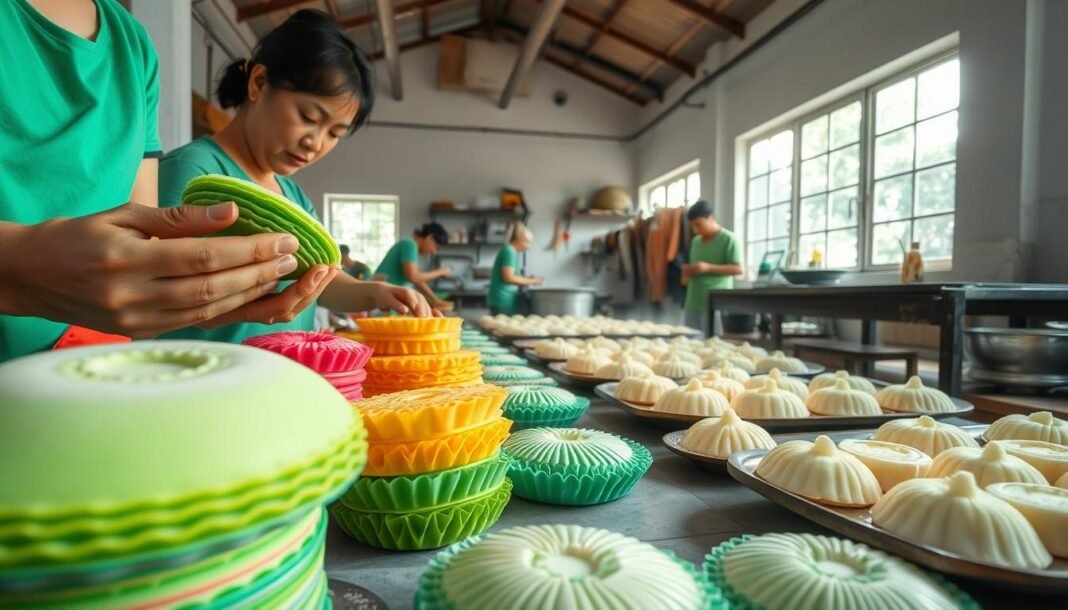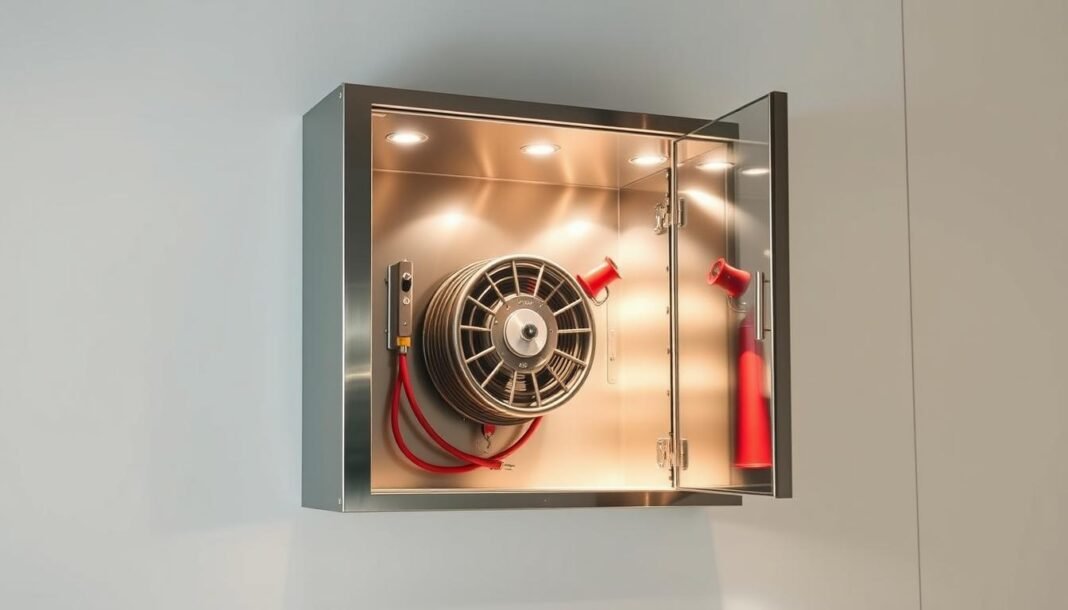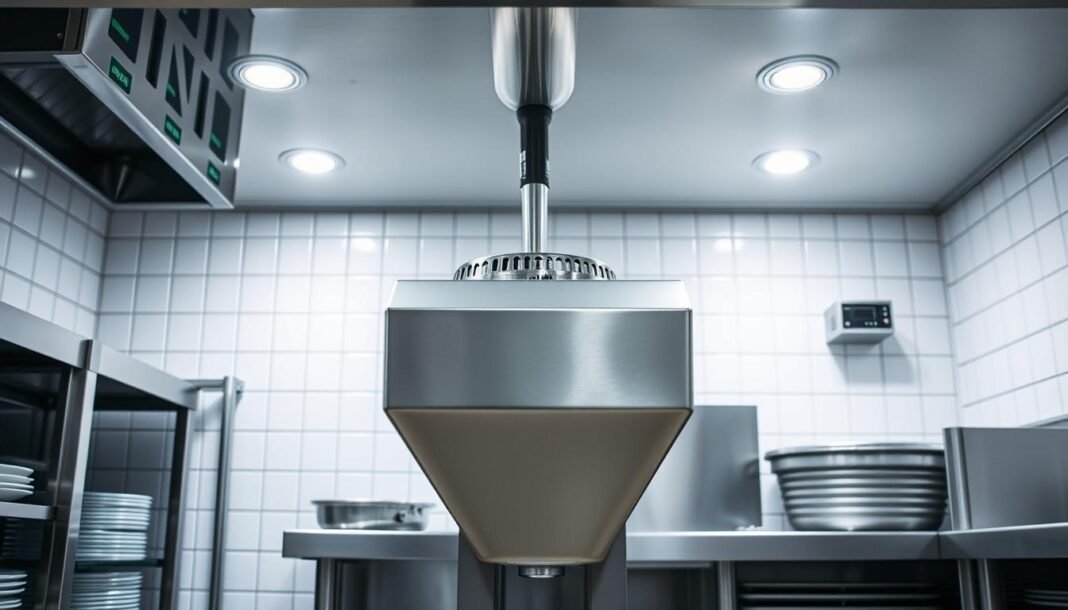Explore the art of making Singaporean kueh in hands-on workshops. These classes, like those at SHATEC, open a door to Singapore’s rich culinary heritage. Each kueh, a small treat, tells stories of culture, family, and history.
From steamed rice cakes to vibrant coconut-based desserts, these workshops share techniques passed down through generations.
Join a Singaporean kueh workshop to discover how ingredients like palm sugar and pandan leaves create iconic dishes. These sessions do more than teach recipes. They connect you to the heart of Singapore’s diverse food scene.
Whether you love cooking or exploring cultures, these classes offer a tasty and educational journey.
Key Takeaways
- Learn traditional recipes in authentic Singaporean kueh workshops.
- SHATEC offers hands-on sessions showcasing cultural heritage.
- Discover ingredients like coconut, rice flour, and tropical spices.
- Workshops blend history with modern cooking methods.
- Perfect for food lovers seeking a unique cultural experience.
Introduction to Singaporean Kueh Workshops
Explore the art of traditional kueh art in hands-on workshops. These sessions mix heritage with creativity. They are perfect for those interested in Singapore’s culinary traditions.
Overview of Kueh Art
Kueh are more than just snacks. They are edible treasures passed down through generations. Artisans create intricate designs like flower petals or geometric patterns. These designs reflect Malay, Chinese, and Peranakan cultures.
Each piece has a story. It tells of family, festivals, and community. It’s a way to connect with the past.
“Every fold and cut is a step into history,” says a workshop instructor. “These skills keep traditions alive for new generations.”
What to Expect in a Workshop
- Guided instruction on mixing coconut milk and glutinous rice flour.
- Learning shaping techniques from masters.
- Tasting finished creations paired with stories behind each recipe.
Workshops also include visits to local markets. This lets learners connect with Singapore’s culinary scene. You’ll leave with recipes, a new skill, and a deeper love for traditional kueh art.
History and Cultural Significance of Kueh
Kueh has a long history in Singapore, dating back centuries. It comes from the Malay Archipelago’s rich culinary traditions. These small treats symbolize community and tradition, shared through artisan kueh techniques passed down through generations.
Early recipes used local ingredients like coconut, palm sugar, and rice flour. These ingredients reflect the region’s farming past.
- Origins trace back to Indonesia and Malaysia, brought by early settlers.
- Colonial trade routes introduced new ingredients like nutmeg and cloves, blending flavors into kueh varieties.
- Traditionally prepared for festivals like Hari Raya and Chinese New Year, kueh became vessels of cultural exchange.
Today, artisan kueh techniques do more than just share recipes. They show Singapore’s diverse culture. Families still come together to make kueh during celebrations, keeping traditions alive.
Workshops now teach these methods to more people. They connect the past with the present. From small village kitchens to modern classrooms, the craft grows while staying true to its roots.
Exploring Traditional Ingredients and Techniques
Every bite of kueh tells a story through its ingredients and methods. Singapore’s cultural dessert heritage is built on timeless staples like durian, mung bean, and glutinous rice flour. These ingredients are more than just flavors—they connect us to generations of culinary tradition.
Key Ingredients in Kueh Making
- Glutinous rice flour: The foundation for textures soft and chewy.
- Durian: Bold and aromatic, symbolizing Singapore’s love for bold flavors.
- Mung bean paste: Sweet and earthy, a common filling in classics like kueh lapis.
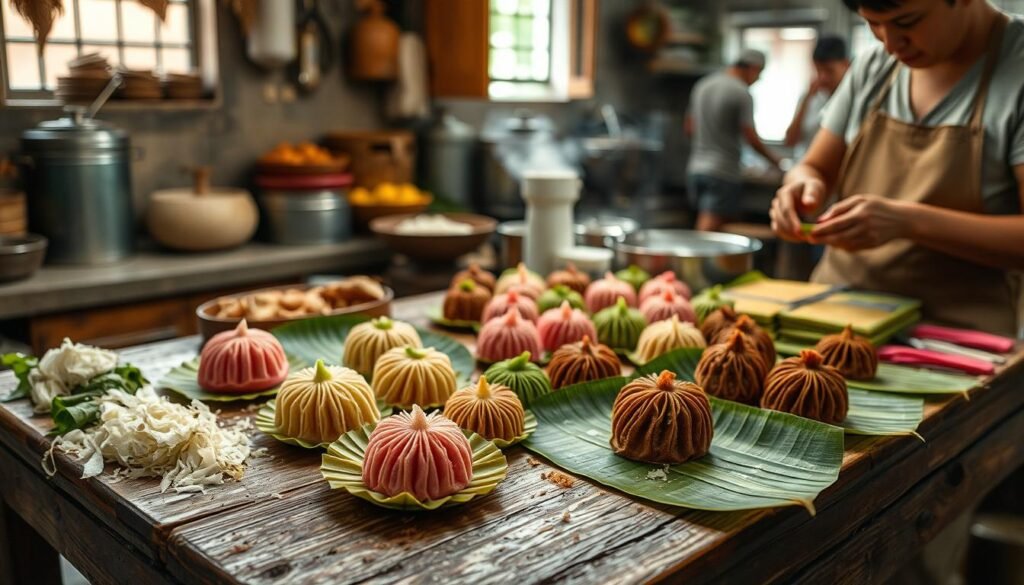
Step-by-Step Traditional Techniques
Mastering kueh requires precision. Here’s how it’s done:
- Mixing: Blend ingredients slowly to avoid overworking dough.
- Shaping: Use hands or molds to create iconic forms like kueh dadar’s folded leaves.
- Steaming: Gentle heat ensures moistness without cracking.
These steps preserve methods passed down for decades. Instructors often share stories about how each motion honors ancestors. It turns recipes into living history. Whether shaping or steaming, every detail connects us to cultural dessert heritage—a hands-on lesson in tradition.
Kueh Workshop Singapore: A Unique Culinary Journey
Step into a hands-on kueh class and discover how Singapore’s vibrant food culture comes alive through its kueh traditions. Each workshop reveals layers of history, blending flavors from Malay, Chinese, and Peranakan roots into one cohesive experience.
The Essence of the Singapore Experience
These workshops are more than cooking sessions—they’re cultural dialogues. Instructors guide participants through techniques passed down generations, using ingredients like coconut, palm sugar, and rice flour. The hands-on kueh class setting fosters connection, mirroring how kueh unites communities during festivals and family gatherings.
Comparing Regional Styles of Kueh
Explore how Singapore’s kueh reflects its multicultural identity through these regional contrasts:
- Malay-inspired kueh: Soft coconut-based treats like kueh lapis, layered with vibrant colors and spices.
- Peranakan kueh: Elaborate designs, such as kueh dadar, wrapped in banana leaves, showcasing intricate folding methods.
- Chinese-influenced kueh: Steamed or fried varieties like kueh bangkit, emphasizing crisp textures and sweet fillings.
This diversity turns the workshop into a journey across Singapore’s neighborhoods, proving that every bite tells a story. Whether shaping dough or mastering traditional molds, learners grasp how regional flavors intertwine to define the city-state’s culinary soul.
Registration and What to Expect in Your Workshop
Ready to join a culinary workshop Singapore experience? First, visit the official event website or contact the coordinators. Registration opens 6 weeks before each session. Slots fill up fast, so check availability and book online or by phone.
When you arrive, you’ll get a welcome kit with everything you need. Workshops last 3 hours, with hands-on demos and guided practice. Here’s what you should know:
- Bring an apron and comfortable clothing
- Equipment like mixing bowls and molds are provided
- Snacks and drinks are complimentary
Refund policies allow cancellations up to 48 hours before. Late cancellations get a 50% credit for future workshops. All under 18 must be with an adult. Need help? The team is here daily from 9 AM to 7 PM.
Don’t worry, workshop leaders will guide you every step of the way. Enjoy the process and learn new skills. Whether you’re new or experienced, every moment is for learning and fun.
Tips for First-Time Participants in Kueh Making
Learning to make kueh takes patience and practice. Start with these pre-workshop tips. They help beginners feel confident and enjoy learning this cultural craft.
“The best kueh makers are those who come curious and ready to adapt,” says Chef Lim, a veteran instructor at Singapore’s culinary centers.
Essential Pre-Workshop Preparation
Before your first class, follow these steps:
- Review workshop guidelines and materials lists provided by the instructor
- Confirm dietary restrictions with the organizer 48 hours in advance
- Wear comfortable clothing and apron to avoid spills
Common Challenges and Solutions
| Challenge | Solution |
|---|---|
| Overcomplicating recipes | Focus on mastering 1-2 core techniques per session |
| Equipment shortages | Instructors provide backups; participants can use household tools as substitutes |
| Time management | Instructors break sessions into 15-minute modules with clear checkpoints |
Mistakes are part of the learning journey. Instructors suggest adjusting dough textures by adding a teaspoon of water at a time. Stay positive—every failed attempt teaches something new!
Spotlight on Local Instructors and Their Stories
Behind every perfect kueh is the skill of local culinary experts. They spend their lives keeping Singapore’s food traditions alive. These dedicated teachers mix old traditions with hands-on learning.
“Every kueh tells a story passed down through generations,” says one instructor. “Sharing this legacy is my way of keeping history alive.”
Many teachers grew up with these traditions. Some learned from family, others through deep research. They teach more than just how to make kueh. They share stories about special ingredients like pandan leaves or coconut.
Students leave with recipes and a deeper love for Singapore’s food culture.
- Teach step-by-step methods honed over years
- Highlight regional variations in kueh styles
- Encourage questions to foster curiosity
These experts make workshops more than classes. They turn kueh-making into a bridge between past and present. Every session is a memorable experience.
Blending Tradition with Modern Flavors
Kueh, a beloved part of Singapore’s food scene, is changing but still stays true to its roots. Chefs and bakers are now mixing modern kueh innovations with tradition. They create dishes that amaze and respect the old ways.
Innovative Twists on Classic Recipes
Modern chefs are giving old favorites like kueh lapis and pulut hitam a new spin. Think chocolate-filled ondeh-ondeh or matcha-flavored pandan chiffon cakes. These modern kueh innovations blend global tastes with respect for cultural heritage.
Singapore’s modern kueh innovations also feature local ingredients like jackfruit or dragonfruit. These add bright colors and interesting textures to the mix.
“Innovation isn’t about replacing the past—it’s about giving tradition new life.” — Chef Lim Mei Lin, Singapore Culinary Collective
Integrating Local and Contemporary Techniques
Chefs are combining old and new techniques. For instance:
- Traditional steaming meets sous-vide for perfect texture
- Hand-grated coconut meets 3D-printed kueh shapes
| Traditional | Modern |
|---|---|
| Hand-kneaded dough | Hydrocolloids for smoother textures |
| Cooked over charcoal | Temperature-controlled steamers |
These updates don’t throw out heritage; they celebrate it. From pandan cheesecakes to coconut macarons, modern kueh innovations show that old and new can meet on one plate.
Learning, Community, and the Future of Kueh Workshops
Joining a kueh workshop is more than just learning recipes. It’s about becoming part of a lively community of kueh enthusiasts. These sessions become places where people from different generations and cultures come together. They share stories, techniques, and even family recipes, making every class a celebration of heritage.
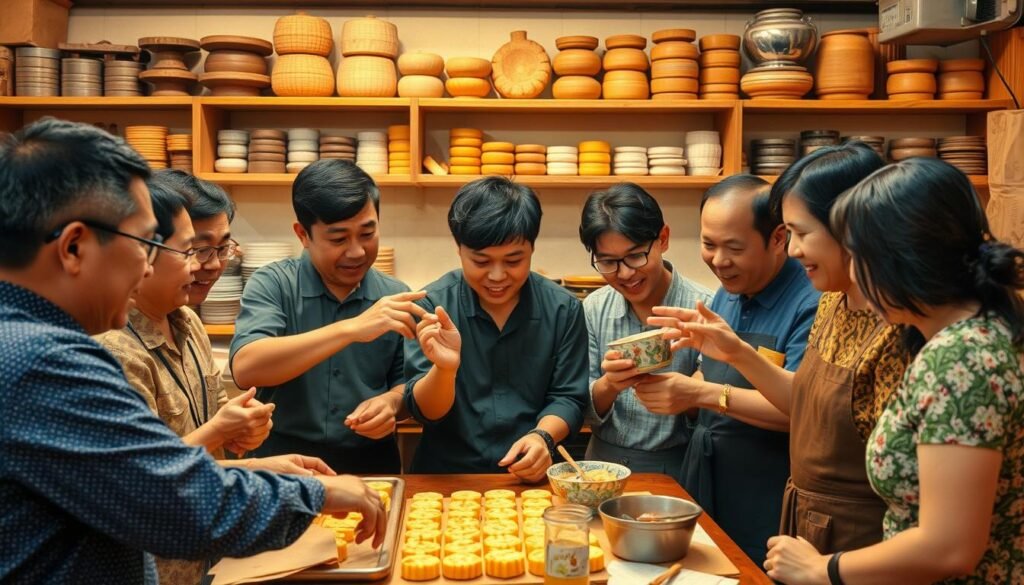
Building a Community of Kueh Enthusiasts
Workshops in Singapore often team up with SkillsFuture to make learning easy. Instructors like Madam Lim at Tradition & Twist Kitchen focus on teamwork. “Seeing learners come back to teach others shows how our community grows,” she notes.
Regular events like the monthly “Kueh Swap” gatherings help members bond over their love for kueh. They get to trade creations, making their connections stronger.
Future Trends in Kueh Making
New trends are changing kueh culture. Here’s what’s coming:
- Tech-aided traditions: Digital tools like recipe apps make measuring ingredients easier.
- Fusion flavors: Chefs are trying out new flavors like matcha or lavender in kueh while keeping traditional methods.
- Sustainability focus: Workshops now teach how to reduce waste, cutting down food scraps by 30%, as reported in 2023.
“The future is about keeping kueh alive through curiosity, not just nostalgia.”
Whether you’re new to baking or have years of experience, these workshops welcome you. They invite you to help write the next chapter of Singapore’s culinary history. Your skills and stories are important—join the community of kueh enthusiasts today!
Conclusion
Singapore’s kueh workshops open a window into its rich culinary heritage. You get to learn by doing and hear stories of the culture. It’s a mix of tradition and innovation.
Attending a workshop is more than baking. It’s about connecting with others who love these dishes. You learn from experts and take home new skills and ideas.
Are you ready to begin? Check out SHATEC’s website or call them at [email/phone] for upcoming classes. Whether you’re new or already love cooking, these workshops are a tasty way to explore Singapore’s culinary world.


